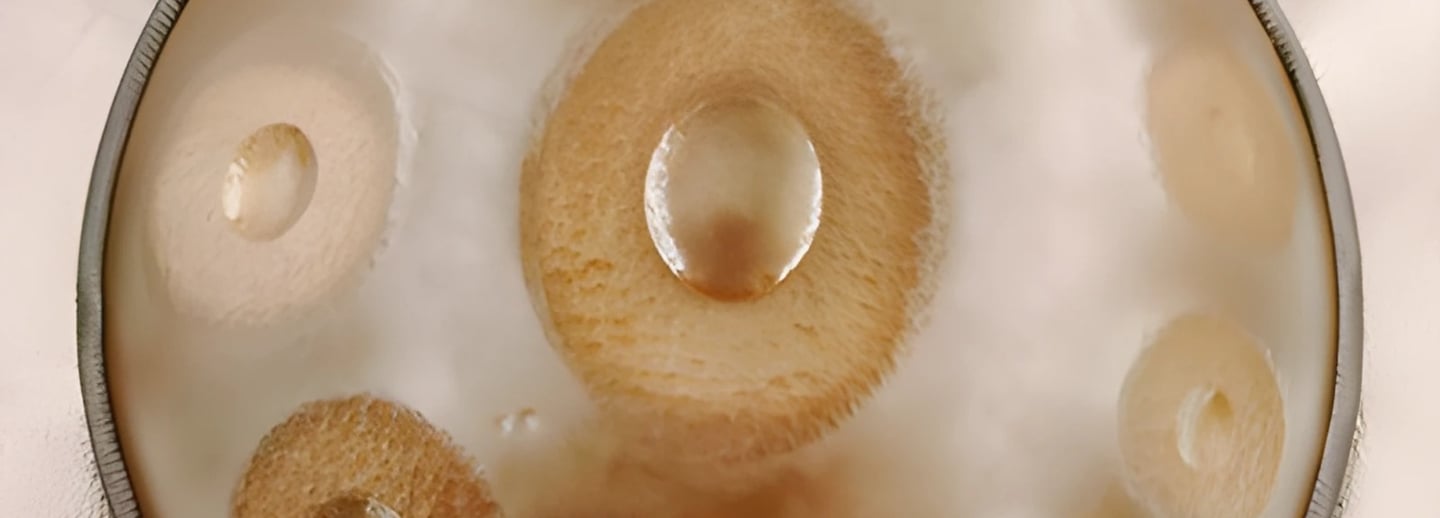The Difference of Handpan Materials: Nitrided or Stainless – A Symphony in Steel
Discover the emotional and acoustic differences between nitrided and stainless steel handpans. Explore how material choice shapes tone, durability, and artistic expression. Keywords: nitrided steel handpan, stainless steel handpan, handpan material comparison, handpan sound quality, instrument durability.
Azael
5/30/20214 min read


As a handpan artist and lifelong student of this instrument’s mystical voice, I’ve often been asked: Does the soul of a handpan lie in its steel?
The answer, like the instrument itself, resonates in layers. Nitrided and stainless steel—two materials that birth profoundly different characters in sound and spirit—are not merely choices in craftsmanship. They are philosophical decisions, shaping how the handpan sings, ages, and connects with its player. Let us delve into the metallurgical poetry behind these materials.
The Difference of Handpan Materials: Nitrided or Stainless – A Symphony in Steel
1. Nitrided Steel: The Alchemist’s Whisper
Nitrided steel begins as raw, unhardened metal—a blank slate infused with possibility. Through a process called gas nitriding, the steel is heated in an ammonia-rich environment, bonding nitrogen to its surface. This transforms the metal’s outer layer into a hardened, crystalline shell while preserving a softer, flexible core.


Sustain
Notes linger like breath on a cold morning, with decaying overtones that evoke nostalgia.
Responsiveness
The material’s dual hardness allows subtle dynamics—soft strokes whisper, while firm strikes ignite rich, full-bodied resonance.
Warmth
Nitrided steel carries a rounded, organic timbre, reminiscent of ancient singing bowls. Its harmonics bloom gently, creating a "vocal" quality that many describe as human.
Sound Profile
Nitrided handpans age like wine. Over years of play, oxidation etches a patina into the steel, deepening its tonal maturity. Each micro-scratch becomes a footnote in the instrument’s story, a collaboration between maker, player, and time.
2. Stainless Steel: The Celestial Mirror
Stainless steel, an alloy fortified with chromium, resists corrosion innately. Its sleek, reflective surface and structural uniformity make it a canvas for modern artisans seeking precision.


Attack
The initial strike feels more immediate, almost percussive, before melting into sustained tones.
Consistency
Less susceptible to environmental changes (humidity, temperature), stainless steel offers reliable tuning stability.
Clarity
Notes ring with laser-like precision, their harmonics crisp and articulate. Ideal for complex scales, stainless steel delivers a "crystalline" brightness.
Sound Profile
A stainless steel handpan is a frozen moment—pristine and eternal. Its resistance to patina means it retains its factory-born brilliance, reflecting light (and listener) like a musical mirror. Yet, this constancy demands a trade-off: it lacks the organic evolution of nitrided steel, making it feel more "timeless" but less "alive" to some purists.
3. The Maker’s Dilemma: Tradition vs. Innovation
Appeals to traditionalists who revere the handpan’s roots in Trinidadian steelpan culture. Its malleability allows tuners to "sculpt" notes with nuanced depth, but the nitriding process requires expertise to avoid brittleness.


Nitrided Steel
Stainless Steel
Attracts avant-garde builders exploring extended scales and experimental tunings. Its rigidity supports higher tension, enabling innovative note layouts, but its hardness can challenge tuners seeking warmth.
4. Durability: A Dance Between Resilience and Resonance
Stainless Steel
Nearly impervious to corrosion, ideal for humid climates or traveling musicians. However, its hardness makes it prone to irreparable damage if struck harshly.


Nitrided Steel
Vulnerable to rust if neglected, yet its softer core forgives minor dents. Regular oiling becomes a ritual, akin to tending a sacred object.


5. The Player’s Heart: Which Material Resonates with You?
You crave an instrument that "ages with you," its tone deepening as your skill evolves.
You value warmth, emotional texture, and a connection to the handpan’s ancestral spirit.


Choose Nitrided Steel if:
Choose Stainless Steel if:
You prioritize clarity, volume, and a modern aesthetic.
Your music leans toward rhythmic complexity or fusion genres requiring sharp articulation.
Beyond Metal, a Mirror of the Soul
The debate between nitrided and stainless steel is not about superiority—it’s about identity. A nitrided handpan is a living entity, its voice shaped by the hands that play it and the air that carries its song. A stainless steel handpan is a precision oracle, offering unchanging truths in a world of flux.
As both a performer and devotee, I’ve learned this: the material is a vessel, but the music is the journey. Whether nitrided or stainless, every handpan holds a universe of emotion, waiting to be awakened by the courage to strike, listen, and feel.
